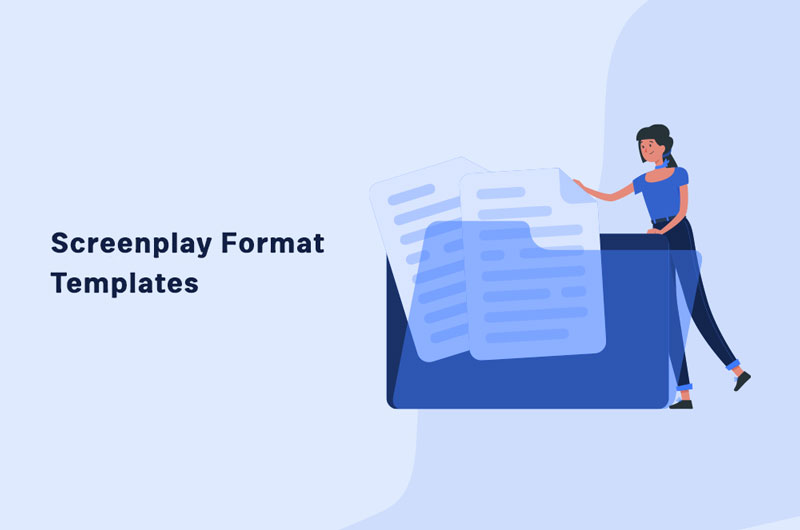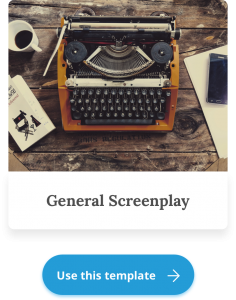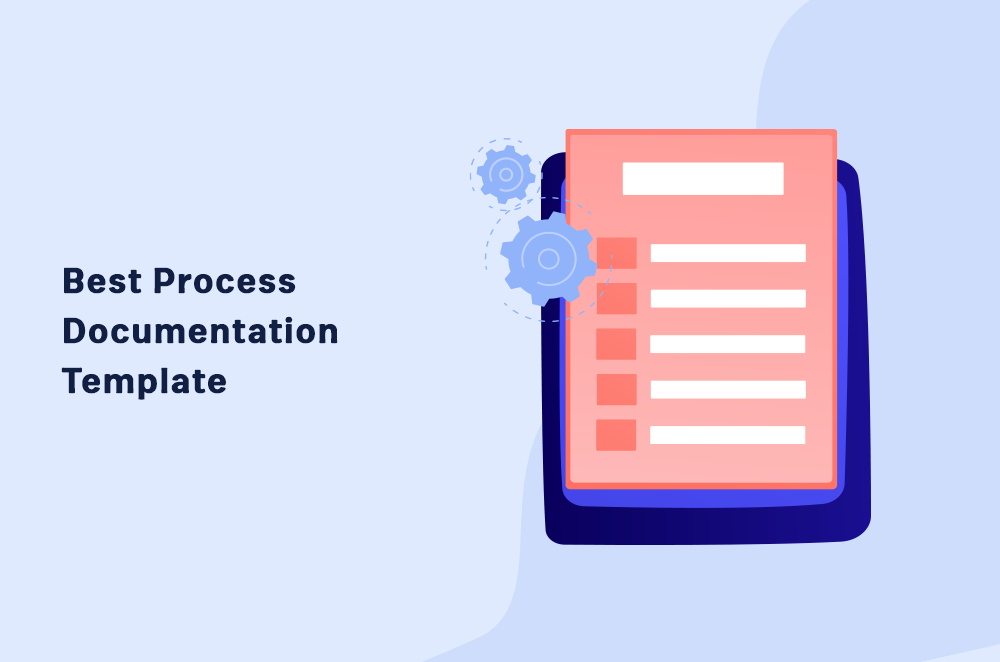Writing a screenplay is an extremely creative undertaking, albeit a complex one. New screenwriters working on their first theater/stage play or film script will need all the help they can get through resources such as a screenplay format template.
Good news though – budding screenwriters can find tons of helpful resources to streamline their workflow and help develop their scripts.
Screenplay templates are a prime example of such a resource.
In this article, I’ll list the 5 best screenplay format templates that writers can use to write better, more comprehensive screenplays much more easily.
Let’s dive right in.
What is a Screenplay Format Template?
Simply put, a screenplay format template is a pre-built structure in which you can add characters, movements, and story elements to create an actionable script.
It’s basically a layout with certain qualities that suit a specific genre of screenwriting.
For example, an action screenplay will be structured differently and have different pacing from a psychological thriller screenplay. Both genres have script templates that suit different types of stories from each genre.
A thriller screenplay template will structure the character movement, staging, and dialogue delivery according to how an ideal thriller feature should be, while preventing it from looking and moving like an action feature.
Currently, we have screenplay format templates for almost every theatrical and cinematic genre, including drama, comedy, action, thriller, autobiography, and more. Each of these templates have a different structure, but the best ones do have some things in common.
Characteristics of the Ideal Screenplay Format Template
Regardless of the screenplay genre, every screenwriting template has some characteristics that separate it from the rest.
However, the ideal screenplays all have the following qualities in common:
- Comprehensive layout
- Contemporary features
- Configurability
- Creative space
Let’s take a look at each of the characteristics individually.
Comprehensive Layout
If you look at the screenplay for some of the best movies ever made, you’ll find that they all feature a complete and detailed story arc with textbook variations in pacing and dialogue as the story progresses.
Yes, almost all screenplays have some holes that may have been overlooked during writing, but as a structure, they will include all the fundamental aspects of the story they’re telling.
This means that a great screenplay format template will:
- Be formatted according to the genre
- Have plenty of room for brainstorming and subject research
- Feature act, chapter, and scene layouts
- Leave room for character and setting edits (left margin-right margin variation)
- Be easy to use for beginners
Other than some specialized genres such as anthology and neo-bizarro, every ideal screenplay format template has some combination of these qualities.
Contemporary Features
Screenplays have had a somewhat similar structure since, more or less, the start of the previous century.
The same title page, with the same standard Courier font, text indents, scene heading/slugline and subheader prefixes (INT-EXT), action line layouts, etc. All of it has remained unchanged over the years.
However, with the coming of app-based screenwriting software, we have a ton of contemporary features such as automated page numbers, time of day, parentheticals, and notes popups with specific character names.
Even the general rule of ‘one page equals one minute of screen time’ doesn’t apply in all scripts today.
While it’s not necessary to have a fully automated interface on the script layout, every task that can be automated gives the writer more time for important tasks such as contributing to off-screen production, recording voiceovers, etc.
Furthermore, because most writers today prefer a smartphone over the traditional typewriter, it pays to have a screenplay editor in the palm of your hand.
Configurability
A tight screenplay formatting runs the risk of making your story look and sound similar to all the stories that have used it in the past.
The same events, the same character archetypes, the same movements and delivery, and the same buildup can quickly become boring.
The best screenplay templates have a structure that’s crafted with the story genre in mind but gives the writer room to play around with their characters, settings, etc.
For example, if I’m writing a character who’s learning how to write a book, I’d want to show him picking up pointers from nature and various other creative genres and going back to alter her style – not just researching from the works of other writers.
Taking a non-traditional approach to character development may seem counter-productive and time-consuming. However, a good screenplay template will allow the writer to do that without making the script unbalanced.
Creative Space
Rigidity is a very common factor in the majority of the traditional screenplay formats.
Some rigidity is good since it keeps the story structured and prevents writers from focusing too deeply on one particular aspect while neglecting the rest.
However, screenplay templates should not be too limiting in terms of creative freedom for the writer.
For example, the ideal screenwriting template should allow one character out of the several to experience a different character development stage than the rest, at any particular point in the plot.
This will keep all the characters from looking and sounding like they’ve been crafted from a similar mold and have no unique progression of their own.
Furthermore, the best templates should let screenwriters modify their plot development in order to write for both feature films and series.
Common fiction tropes are already adopted by thousands of screenwriters around the world. It’s the job of the perfect template to give you enough creative space to craft a unique story from a traditional genre.
The 5 Best Examples of a Screenplay Format Template
Both experienced and new screenwriters often use script templates to streamline their workflow and tell their story more effectively.
However, because of this, there are just too many templates to choose from out there.
Additionally, it’s become increasingly difficult to determine which template will benefit your unique story the most.
For that reason, here are the 5 screenplay templates that I’ve found to be the best in their respective genres.
1) General Screenplay Template by Squibler
The General Screenplay template is a fundamental tool for screenwriters, editors, and producers alike.
It combines all the story development essentials with a streamlined structure that allows writers to fully focus on their story without worrying about the layout and other secondary details.
Furthermore, the template makes direction easier by formatting all the story elements in a very clear and reader-friendly manner.
On top of all that, the general template is versatile.
This makes it great for any writer who doesn’t know which genre or format their story fits into and would rather just have an all-around template that helps them concentrate on the writing part from the first page to the wrap.
While Squibler has other, more dedicated templates, this one is the top pick due to its broad range of usability and comprehensive structure that doesn’t let writers miss out on any important story aspects.
Overall, the General Screenplay template is ideal for new writers who want to build on an effective and proven structure, as well as experienced writers looking for a trusty template for versatile usage.
Try the General Screenplay Template for free, here.
2) Adventure Template by Squibler
The Adventure template takes the foundation from the General Screenplay template and adds adventure-specific elements to it.
Basically, it’s an all-in-one formatting solution for an adventure story of any size and scope.
The template was developed by putting together the best aspects of the greatest adventure features of all time, from award-winning films to travel-based series.
Additionally, it focuses on creating a sense of relation with characters, letting writers bring audiences into the world their characters inhabit.
Adventure scriptwriting often involves a deeper focus into the setting, rather than the characters. However, too much of this can lead to an imbalanced story with underdeveloped characters.
The Adventure template ensures that writers don’t forget the all-important character development tropes while creating an adventurous setting,
Overall, the Adventure Template is ideal for storytellers who want to craft a narrative worthy of a blockbuster feature without breaking the bank.
Try the Adventure Screenplay Template for free, here.
3) Standard Screenplay Template by Microsoft Office 365
The standard Screenplay template by Office 365 is a Word-based layout that’s designed with user-friendliness in mind.
The layout is one of the simplest, with all the basic elements of scriptwriting and minimal clutter.
Because it’s a Word template, Screenplay works well on almost all electronic devices with MS Word. This makes it the ideal cross-platform template for writers who want to work on the script while traveling or using multiple devices without messing up their workflow.
Furthermore, the template is saved in Microsoft Word doc files, which allows it to be exported in PDF form and integrated into a larger software ecosystem on a production set.
Overall, it’s the ideal starter template for completely new scriptwriters who plan to eventually move on to more complex templates.
To download the standard Screenplay template, visit here.
4) WriterDuet Screenplay Templates
WriterDuet is one of the best screenwriting software systems and comes with a ton of comprehensive script templates.
It’s designed to be app-based, with real-time collaboration capabilities that make it suitable for use on the go, as part of a much larger production.
The templates come in a variety of genres and the script formatting can be customized to suit the needs of the writer and story. In addition to that, each template is detailed and has individual sections that writers can prioritize according to their writing process.
WriterDuet lets writers access a broad range of writing tools within the app to not just improve their existing workflow, but create it from scratch within the app ecosystem.
Overall, the WriterDuet templates are for active professional writers who are working on shooting scripts or part of a larger production.
To learn more about the WriterDuet templates, visit here.
5) Final Draft
Final Draft is another full-suite screenwriting software that features a large number of templates.
Widely regarded as the industry standard, it’s arguably the most used template in film and television, with dozens of big Hollywood names having been made on it.
Furthermore, with over 300 templates to choose from, writers can use it to work on almost any type of screenplay, from a short film to a spec script.
Final Draft stands out among other industry standards (Fade In, Celtx, etc.) because of its template diversity. This allows both professional and aspiring writers to start writing immediately, with minimal training.
Overall, Final Draft is ideal for writers of all experience levels who are looking to adopt a commonly used screenwriting software.
To learn more about the Final Draft templates, visit here.
Major Practical Benefits of a Screenplay Format Template
Using a scriptwriting template is like having a screenplay cheat sheet.
All the boring placements and lines and page elements that would take away from the creative process, all of those can be avoided with even a basic script template.
Not only can you organize your notes and scenes faster, but also plot easier and drop a ton of distractions while flattening the learning curve.
Plus, it always helps to be able to edit, rewrite, add to, and remodel a script on the fly, like with most screenwriting software in 2020.
Using a Screenplay Format Template
Writing a story that may eventually be seen on the big screen is a major thrill.
In fact, it is one of the most exciting artistic ventures, short of playing the lead in a blockbuster.
A modern screenplay format template can bring you one step closer to writing a made-for-screen story and experiencing that thrill for yourself.
Additionally, the automation and pre-formatted layouts will help you learn more about effective screenwriting than traditional, manual formatting.
Squibler features screenplay templates that help writers with just that and much more in terms of creative output. They serve as the ideal starting point for that perfect story you’re looking to take to the screen.
Now go ahead and pick a genre, load up your template, and start writing your very own hit!


![Scrivener Templates You Can Use [Download Here]](/learn/wp-content/uploads/2021/12/Scrivener-Templates-You-Can-Use1.jpg)

![9 Best Book Writing Templates [+ Free Download]](/learn/wp-content/uploads/2021/12/9-Best-Book-Writing-Templates1.jpg)








